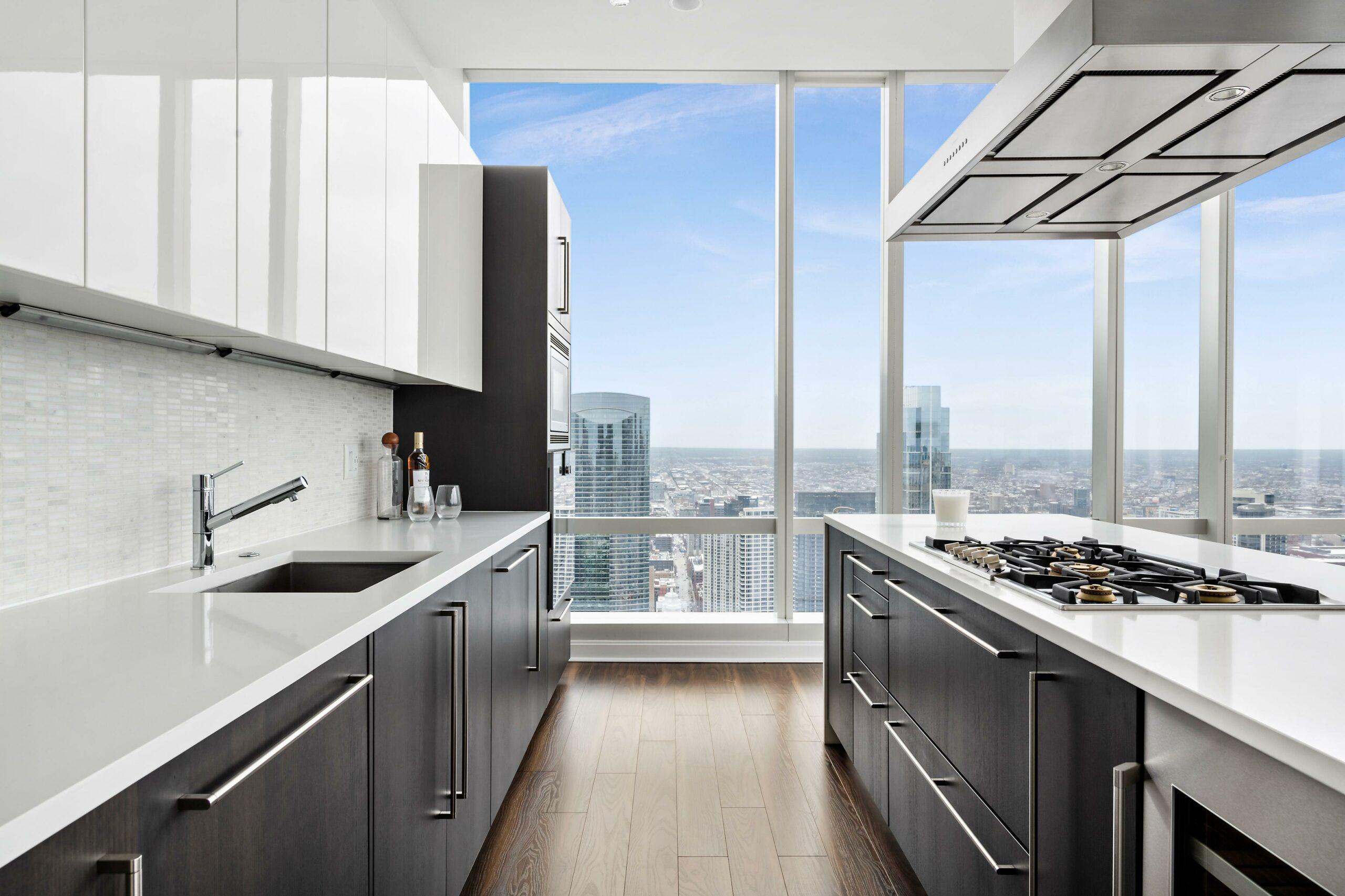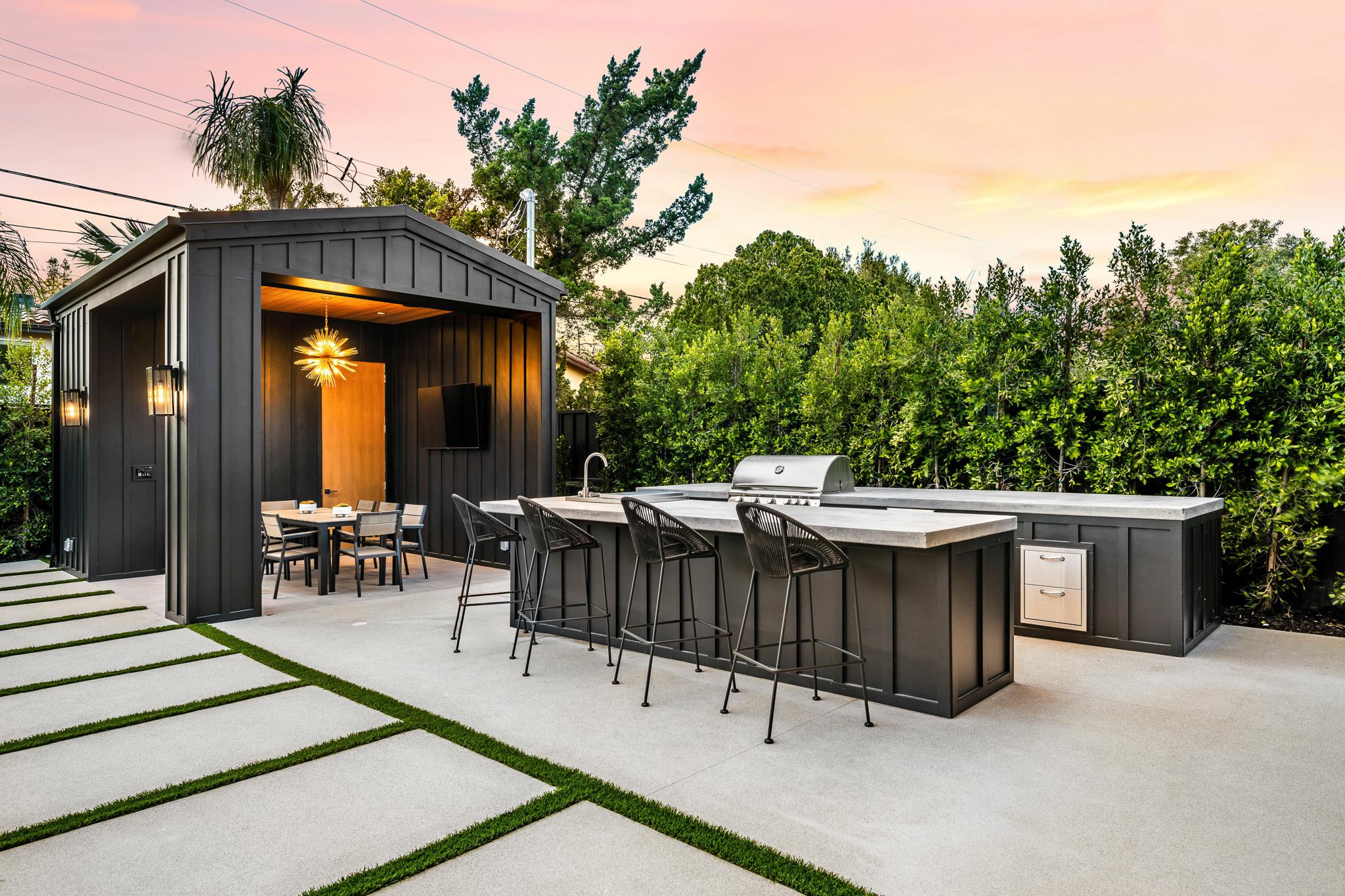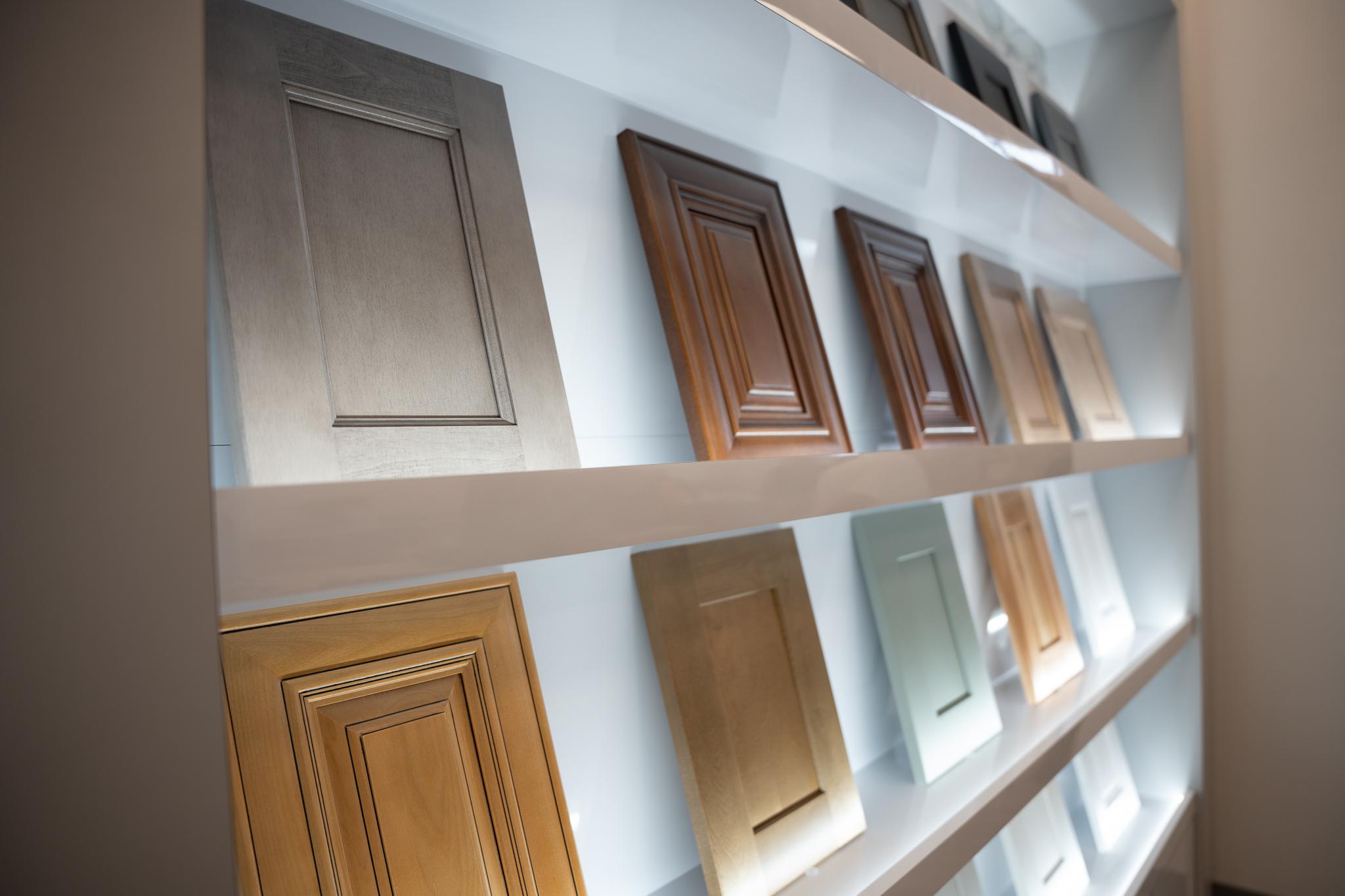Spicing up your cooking space with a designer color may feel risky in an age where white kitchens reign supreme. Enter the two-toned kitchen. Divide your cabinetry in half (upper and lower) and choose different tones, materials, or colors for each.
The concept is rising in popularity, but truthfully? It’s a fresh take on one of the oldest tricks in the book. Most two-toned kitchen combinations feature light upper cabinets and darker lower cabinets. This gives the room a brighter appearance with an air of openness.
It also leverages another design trend we don’t see fading away completely–mixed materials.
Let’s dive a bit deeper into two-toned kitchen combos with additional food for thought.
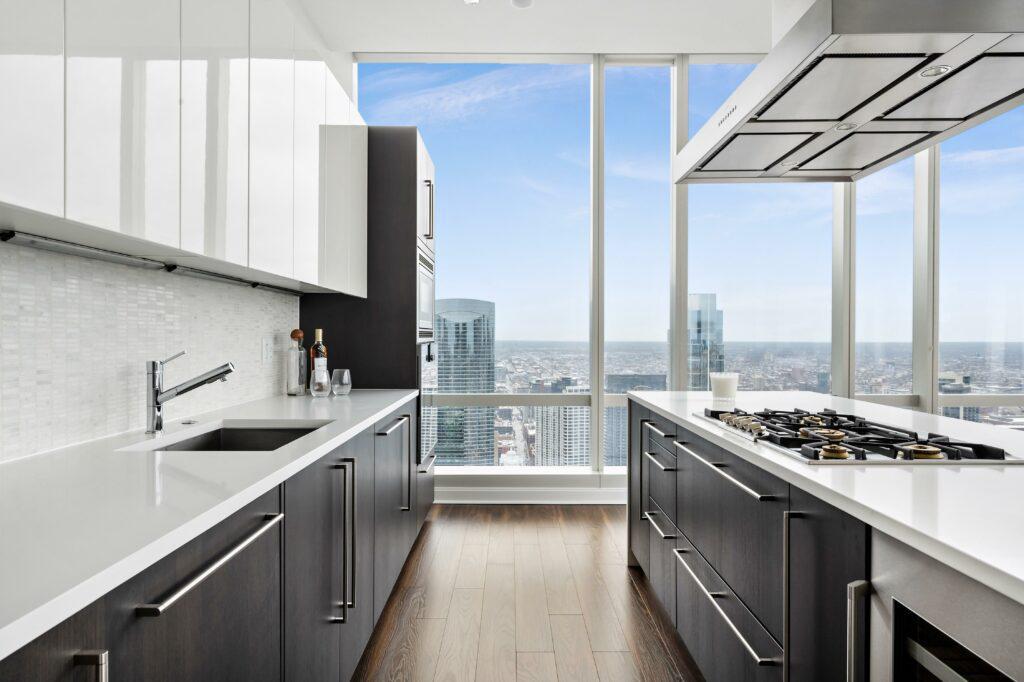
Are two-toned kitchens a good idea?
What’s good or bad depends on your goals and environment. In many instances, two-toned kitchens are more visually interesting. They can help highlight your proudest investments and train the eye to perceive the space the way you’d like.
In the above two-toned kitchen combination, the glossy white slab cabinets complement the spaciousness of the view. It’s a rather seamless transition that makes sense. The rich, dark wood used for the lower cabinets looks luxurious while offering contrast and grounding the bright, open-air feel.
BONUS: Choosing cabinets as we speak? Start with our guide to kitchen cabinet styles.
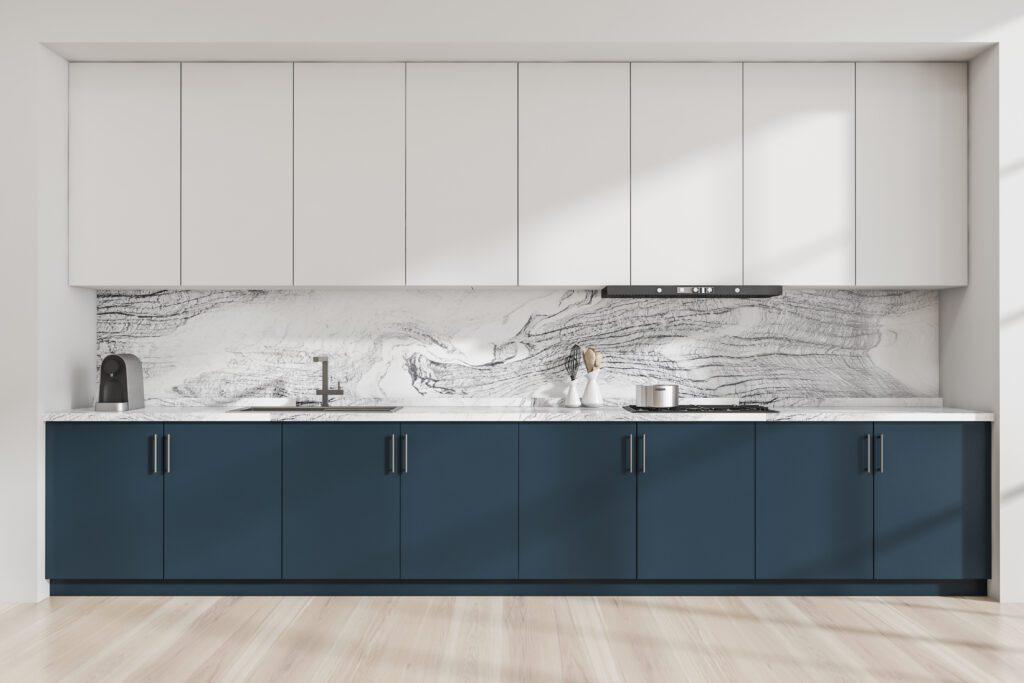
The REAL trend: Blue cabinets
We revealed this right at the beginning. A big reason so many are suddenly paying attention to two-toned kitchens is that they feel it’s a less risky way to incorporate bold colors.
The hottest trending color in cabinets right now? Blue. Many, many two-toned kitchen combinations feature it. Whether it’s a new kind of muted teal, a rich navy, or a picky shade of peacock, we want it. Some shades are calming, some are striking, and all are rather unexpected for the modern kitchen.
It’s a valid concern. Even the most soothing shades can overwhelm when they coat every cabinet. But between staying safe with timeless kitchen styles and throwing caution to the wind with trendy colors, there are two-toned kitchens.
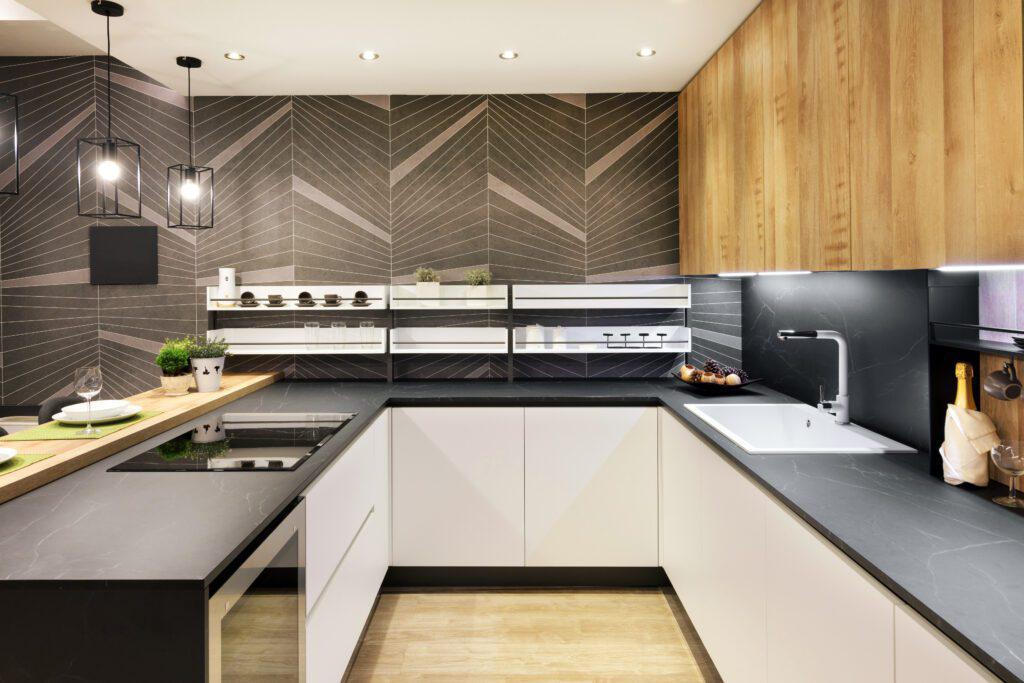
Bending the rules: When light doesn’t top dark
The above concept flouts one of the most commonly held beliefs people have about two-toned kitchens–light on top, dark on the bottom. However, one of the big benefits of dual depths and mixed materials is that you can add space and draw the eye where you want.
In this instance, a narrow galley layout of the cooking space is made less claustrophobic by white lower cabinets. A black countertop creates definition and contrast, leading the visitor’s eyes up toward the geometric wall feature.
Medium-toned wood slab cabinets aren’t competing with anything here. They’re adding a touch of nature-made warmth to an otherwise high-contrast, contemporary scheme.
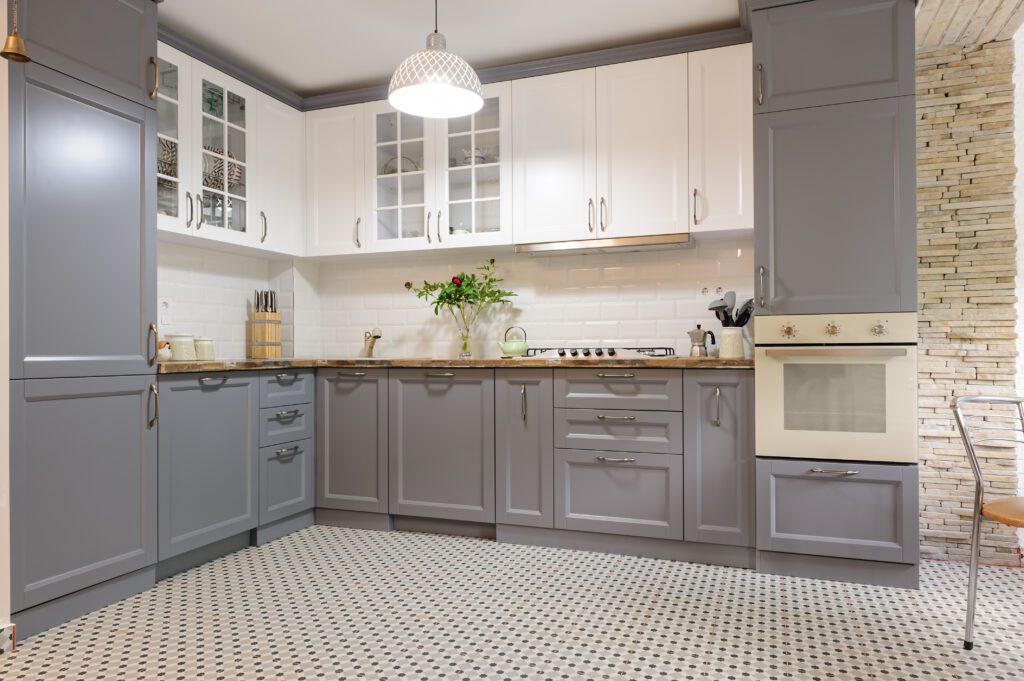
Recap: Pros and cons of two-toned kitchens
Two-toned kitchens may favor the indecisive, but you still need to make that initial commitment to choosing it. Here’s a brief breakdown of the pros and cons.
| Pros of two-toned kitchens | Cons of two-toned kitchens |
|---|---|
| Freedom and flexibility in design, where you get to mix and match multiple favorite materials and concepts | May require more design expertise as it is more complex than single-tone cabinets and areas |
| Visually interesting–you get to add depth, dimension, or spaciousness depending on the details | Results may not be as visually harmonious as planned or desired |
| Can help accentuate your most impressive features, such as a stone countertop or custom kitchen island | Can impact resale value depending on specific design choices |
| Some strike a stunning balance of bold and muted, deep and bright | Might be more expensive, depending on chosen materials |
The secret to two-toned success: A designer
Far from a fad, two-toned kitchens are a vehicle for the smart execution of other trends. From visually creating space to accommodating bold colors and new materials, it’s always worth considering.
However, the two-toned concept gives people pause because there’s plenty of room for things to go wrong. Consulting a design professional and focusing the investment on careful planning is essential.
Two-toned kitchen FAQ
Before we head out, we’ll answer a few common questions about this dual design.
What is the rule for two-tone cabinets?
There aren’t any! However, in many cases where we’re pairing a dark tone with a light one, light cabinets look best on top, and dark cabinets go on the bottom.
You should also try to avoid pairing two trendy colors. Pick one wood or timeless neutral and see how it works with the trending hue.
What color should two tone kitchen cabinets be?
You have a lot of options when it comes to color combinations:
- Warm and natural with medium wood and soft beige
- Modern and clean with on-trend blue or green paired with white
- Calm, complimentary neutrals with one deeper than the other
- Elegant with black or mahogany below pure white
- Mass appeal with gray and white
What makes kitchen cabinets look dated?
Worried that the bold choice for your two-toned kitchen will age rapidly? It might surprise you to learn that the most immediate sign of a poorly-aged design is usually texture or finish.
Distressed cabinets, heralding back to the shabby chic era, and glazed finishes that add a wash to stain can look dated. But neither of these is off-limits by name alone; there are instances where they remain a perfect fit.
Orangey woods and pastels can look outdated or pleasingly retro, depending on their condition and presentation.

